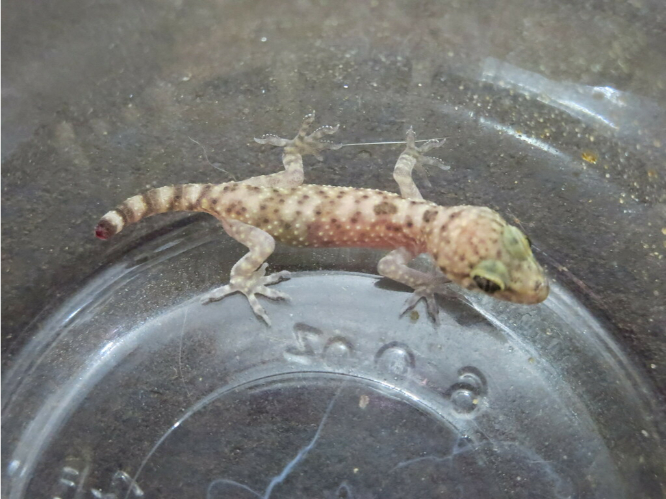If you’ve ever seen a lizard’s tail wiggle on its own while the rest of the lizard darts away, you know just how surprising tail dropping can be. For pet owners, it can be worrying too.
Watching a lizard lose its tail is stressful, and you might wonder if there’s a way to prevent it. The good news is, in many cases, you can reduce the chances of a lizard dropping its tail; and it mostly comes down to keeping your lizard calm, healthy, and stress-free.
While you can’t control a wild lizard’s instinct to drop its tail, there are ways to reduce stress and injury in captive or pet lizards, which makes it far less likely they’ll lose their tail. Ensuring a calm environment, proper diet, and gentle handling are key factors.
Basically, preventing tail loss is about keeping your lizard comfortable and feeling safe. Lizards only drop their tails when they feel threatened, stressed, or cornered.
If you can reduce those triggers, the tail is more likely to stay put.
Why Lizards Drop Their Tails
Before we get into prevention, it helps to know why lizards drop their tails at all. Tail autotomy is mainly a defense tactic.
When a predator grabs a lizard by the tail, the tail comes off, twitches, and distracts the predator while the lizard makes its escape.
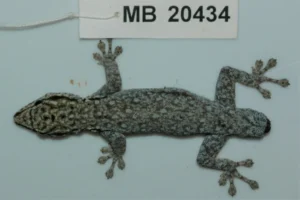
In captivity, tail dropping isn’t always about predators. Pet lizards can lose their tails from stress, rough handling, overcrowding, or sudden changes in their environment.
Basically, the tail drops when a lizard feels threatened or overwhelmed, even if there’s no real danger.
Other things that can trigger tail dropping include:
-
Physical trauma: Grabbing a lizard by the tail or accidentally pinching it.
-
Stress: Sudden movements, loud noises, or new surroundings.
-
Health issues: Malnutrition, dehydration, or illness can weaken a lizard and make it more likely to shed its tail.
-
Overcrowding or fighting: In terrariums with multiple lizards, tails can be dropped during disputes.
Understanding these triggers is the first step to keeping your lizard’s tail safe.
Gentle Handling Is The Most Important Thing
One of the most common reasons pet lizards drop their tails is rough or wrong handling. Unlike humans, lizards don’t automatically trust being picked up.
A sudden grab, especially by the tail, can startle them and trigger tail dropping right away.
Here’s how to handle your lizard safely:
-
Never grab the tail. Always support the body, holding the lizard gently under the chest and belly.
-
Move slowly and calmly. Sudden movements can scare the lizard, even if you think you’re being careful.
-
Limit handling time. Lizards get stressed if they’re held too long. Short, gentle interactions are better.
-
Watch body language. A lizard that hisses, flattens its body, or tries to escape is stressed. Put it back and let it calm down.
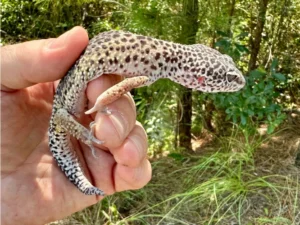
Basically, the calmer your handling, the less likely your lizard will see its tail as a “get away” option.
Create a Safe and Comfortable Habitat
Stress in captivity is a big reason lizards drop their tails. Even small changes in temperature, humidity, or light can make a lizard feel unsafe.
By creating a secure, comfortable environment, you reduce the risk of tail loss.
Focus on these things:
-
Hiding spots: Provide logs, rocks, or artificial caves. Hiding makes lizards feel safe and less likely to panic.
-
Right temperature and lighting: Lizards rely on their environment to stay healthy. Wrong temperatures can cause stress and increase tail shedding.
-
Humidity control: Some species need high humidity, others lower. Match your lizard’s natural environment.
-
Minimal stressors: Loud noises, vibrations, or constant handling can make lizards feel threatened. Keep the area calm.
When your lizard feels safe, it’s less likely to see dropping its tail as necessary.
Keep Lizards Healthy
A stressed or sick lizard is more likely to drop its tail. Diet, hydration, and overall health all play a big role.
-
Balanced diet: Different lizards eat different things. Insect-eaters like anoles and geckos need live insects. Plant-eaters like green iguanas need leafy greens and vegetables. A well-fed lizard has the energy to stay alert and healthy.
-
Hydration: Dehydration stresses lizards and can affect their skin, which can make tail dropping more likely.
-
Regular check-ups: Watch for signs of illness like lethargy, weight loss, or skin issues. Sick lizards are more likely to shed their tails as a stress response.
Basically, a healthy lizard is a calm lizard.
Reduce Conflict Between Lizards
In enclosures with more than one lizard, tail loss can happen from fighting or accidents. Tails are often the first thing a lizard loses in a scuffle.
-
Provide plenty of space: Overcrowding increases stress and fighting.
-
Watch interactions: Some lizards just don’t get along. If you see chasing, biting, or tail grabbing, separate them.
-
Create visual barriers: Logs, plants, or hides can block sightlines and reduce tension.
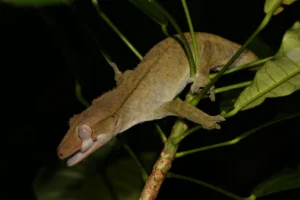
A calm social environment is just as important as a physically safe one.
What to Do If a Tail Is Dropped
Even with all precautions, accidents happen. If your lizard loses its tail:
-
Keep it calm. Reduce handling until it settles down.
-
Ensure a clean habitat to prevent infection at the wound site.
-
Provide good food and water. Energy is needed for healing and future tail regrowth.
-
Watch for infection: Redness, swelling, or bad smells may need a vet.
Remember, losing a tail is stressful but usually not life-threatening. The lizard will survive, and in many species, the tail will eventually grow back.
Can You Stop Wild Lizards From Dropping Their Tails?
For wild lizards, the answer is mostly no. Tail dropping is a survival instinct, and there’s no way to make a wild lizard feel safe enough not to use it if a predator grabs it.
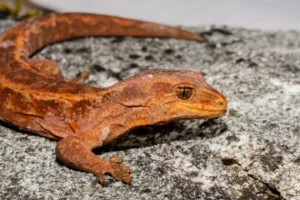
The best you can do is watch from a distance and appreciate this natural behavior.
For pet lizards, though, you have more control. Managing stress, habitat, diet, and handling greatly reduces the chances of tail loss.
Why Tail Loss Isn’t Always Bad
Even with all precautions, lizards sometimes drop their tails. While it looks alarming, remember that lizards are tough.
The tail will grow back, though it may look a little different in color, texture, or length.
Tail regrowth needs energy and good health, which is why prevention is better than dealing with it afterward. But if your lizard does drop its tail, don’t panic.
Keep it in a calm, clean environment with plenty of food, and it will start growing a new tail.
FAQs About Preventing Tail Dropping
Can handling a lizard cause it to drop its tail?
Yes. Rough or sudden handling, especially grabbing the tail, is a common trigger. Always support the body and move slowly.
Is it dangerous if a lizard drops its tail?
It’s stressful and energetically costly, but usually not life-threatening. Monitor for infection and provide proper care during healing.
Will a dropped tail regrow?
In most species that can autotomize, yes. The regenerated tail may look different but still functions as a balance aid and predator distraction.
Conclusion
Preventing a lizard from dropping its tail mostly comes down to reducing stress and handling it gently. Tail dropping is a survival trick, and lizards only use it when they feel threatened.
By providing a safe, comfortable home, proper food and water, and careful handling, you can lower the chance of unnecessary tail loss.
Even if a tail does drop, your lizard can recover, and in many species, it will grow back. But prevention is always better than recovery.
A calm, healthy, secure lizard is less likely to see its tail as an emergency escape, and that means fewer surprises for you.
Watching a lizard live without ever needing to drop its tail is one of the joys of keeping these interesting creatures.
By understanding their behavior, meeting their needs, and respecting their space, you can help your lizard feel safe, secure, and keep its tail intact.
Hi, my name is Ezra Mushala, i have been interested animals all my life. I am the main author and editor here at snakeinformer.com.

